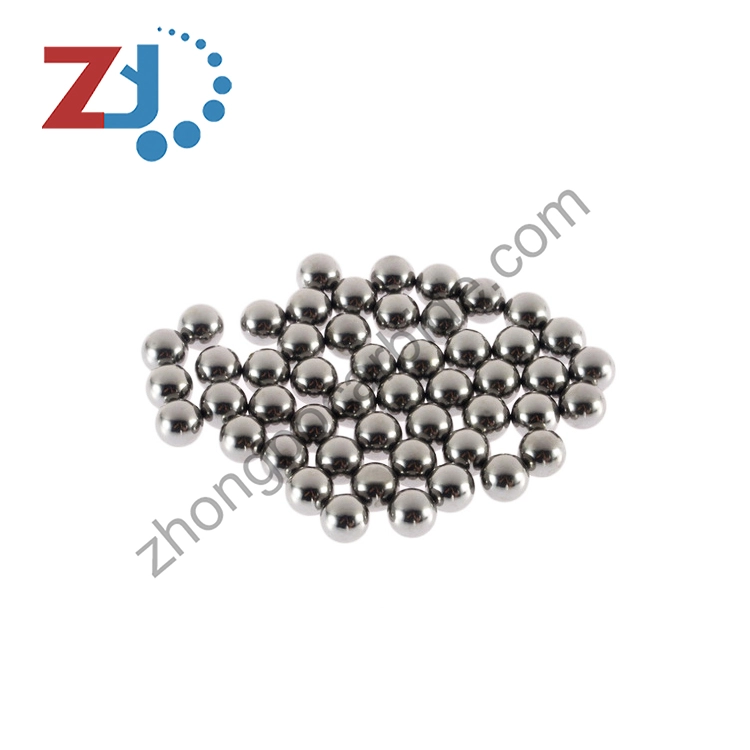Tungsten carbide balls are small, but they pack a mighty punch in various industries. These tiny spheres, often overlooked, play a crucial role in applications ranging from precision bearings to valve seats. In this comprehensive guide, we'll delve into six fascinating facts about tungsten carbide balls and explore how to effectively utilize them in different contexts.
Fact 1: Composition of Tungsten Carbide Balls
Tungsten carbide balls are composed of a combination of tungsten and carbon atoms, resulting in an incredibly hard and dense material. This unique composition gives tungsten carbide balls exceptional properties such as high hardness, wear resistance, and thermal conductivity. They are typically produced through a powder metallurgy process, where tungsten carbide powder is mixed with a binding agent and then molded into the desired shape before undergoing sintering to achieve final hardness.
Fact 2: Applications of Tungsten Carbide Balls
Due to their hardness and durability, tungsten carbide balls find widespread use in various industrial applications. Some common applications include:
Precision Bearings: Tungsten carbide balls are used as rolling elements in precision bearings for machinery and equipment operating in demanding environments.
Valve Seats: In the oil and gas industry, tungsten carbide balls are utilized as valve seats to withstand high pressures and abrasive fluids.
Instrumentation: They are used in instruments and gauges where precise measurements and resistance to wear are essential.
Grinding Media: Tungsten carbide balls are employed as grinding media in ball mills and attritors for pulverizing and milling purposes.
Fact 3: Properties of Tungsten Carbide Balls
Tungsten carbide balls exhibit several remarkable properties that make them ideal for various applications:
High Hardness: Tungsten carbide balls are among the hardest materials known, second only to diamonds, making them extremely resistant to wear and abrasion.
High Density: With a density close to that of gold, tungsten carbide balls provide excellent mass and inertia for effective impact and wear resistance.
Chemical Inertness: They are resistant to corrosion and chemical reactions, ensuring longevity and reliability in harsh environments.
Thermal Conductivity: Tungsten carbide balls have high thermal conductivity, allowing for efficient heat dissipation in high-speed applications.

Fact 4: Types of Tungsten Carbide Balls
Tungsten carbide balls come in various sizes and grades to suit different applications and requirements. Common types include:
Precision Balls: These balls are manufactured to tight tolerances and are used in precision instruments and bearings.
Grinding Balls: Larger tungsten carbide balls are used as grinding media in ball mills and attritors for pulverizing and milling applications.
Blank Balls: Blank tungsten carbide balls are unground and can be custom-sized and finished according to specific customer requirements.
Fact 5: Advantages of Using Tungsten Carbide Balls
The use of tungsten carbide balls offers several advantages over other materials:
Longevity: Tungsten carbide balls have an exceptionally long lifespan due to their high hardness and wear resistance.
Precision: They provide precise and consistent performance, making them ideal for applications that require tight tolerances.
Versatility: Tungsten carbide balls can be used in a wide range of environments, from high-temperature and high-pressure settings to corrosive and abrasive conditions.
Cost-Effectiveness: While initially more expensive than steel balls, tungsten carbide balls offer superior durability and performance, resulting in long-term cost savings.
Fact 6: How to Use Tungsten Carbide Balls Effectively
To maximize the performance and lifespan of tungsten carbide balls, it's essential to use them correctly:
Proper Lubrication: Ensure adequate lubrication in applications involving rolling or sliding contact to reduce friction and wear.
Surface Finish: Pay attention to the surface finish of mating components to minimize wear and prolong the life of tungsten carbide balls.
Avoid Overloading: Do not subject tungsten carbide balls to excessive loads or impacts beyond their rated capacity to prevent premature failure.
Regular Maintenance: Inspect tungsten carbide balls regularly for signs of wear or damage and replace them as needed to maintain optimal performance.
In conclusion, tungsten carbide balls are small yet mighty components with a wide range of applications across various industries. Their exceptional hardness, durability, and versatility make them indispensable in precision engineering, manufacturing, and other critical sectors. By understanding their composition, properties, types, advantages, and best practices for use, you can harness the full potential of tungsten carbide balls in your applications, ensuring reliable performance and longevity.















